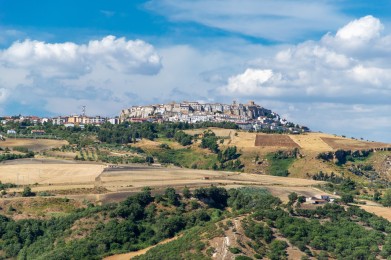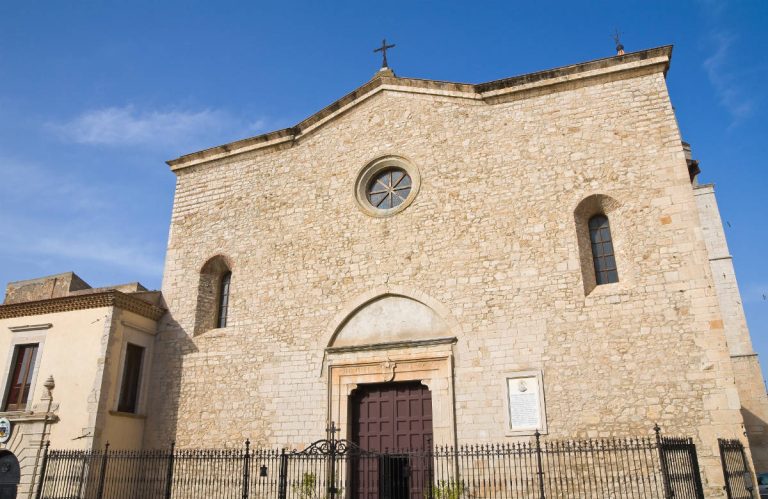The Renaissance co-cathedral of St. Andrew the Apostle in Venosa is a total of 42 meters high. The overlying part consists of two octagonal prisms, which form the base of the 10-meter-high pyramidal spire. The building was erected at the behest of Duke Pirro del Balzo, the man responsible for Venosa’s urbanistic mutation during the last decades of the 15th century. The duke, having become lord of the city, obtained permission from the bishop to demolish the old cathedral and build the castle there, as it was the most vulnerable point of the city and the most subject to attack. While work on the castle proceeded at a steady pace, work on the cathedral, which began in 1470, was not completed until more than 30 years later (in 1502), and the building was consecrated on March 12, 1531. Nonetheless, the structure was still incomplete with the bell tower, the elaboration of which began in 1589 by order of Bishop Rudolf of Tussignagno, was continued in 1614 by Andrea Perbenedetti and finished in 1714.
The interior of the co-cathedral shows a late Gothic architectural style, conspicuously conjugated with Renaissance inserts, and is divided into two floors and three naves. The naves are bordered with pointed arches, of which the central one faces, at its limit, two large arches that mark the area of the transept, beyond which the view closes on the lunette-shaped apse. Descending into the crypt, one reaches where the tomb of Maria Donata Orsini, wife of Pirro del Balzo, from whom the duke had Venosa as a dowry property in 1453, is kept. Orsini died in this town in 1485, at the age of 54, and was initially buried in the church of Santa Maria della Pace, outside the walls of Venosa. After a hundred years, her descendants decided to transfer the body and the marble monument to the Cathedral, and the friars, upon opening the tomb, noticed that her body, as well as her robes, remained intact as if she had died recently and allowed the faithful to be able to touch the deceased woman in order to derive miraculous healings.


